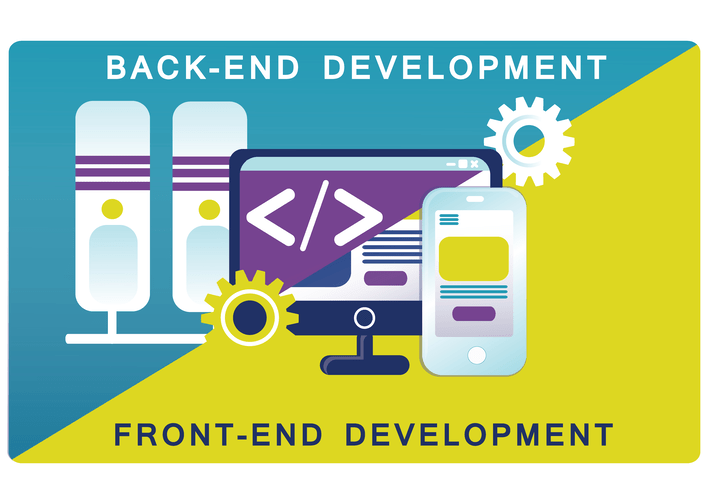“I love the Blameless product name. When you have an incident, “Blameless” serves as a great reminder to not blame anything or anyone and just focus on the incident resolving itself.” Utilize chaos engineering practices to experiment and find system vulnerabilities. Deploy the application across various geographical locations, worldwide, reducing single points of failure.
@Ewan yes, which is the second formula using the SLA based MTBF of 480 minutes, which still doesn’t agree with the other definition. I used google search built in calculator for these quick calculations so perhaps there’s a chance that there’s some precision/floating point/numerical issues messing with these figures. I double checked the calculations using wolfram alpha and it appears to be the same. About Us Learn more about Stack Overflow the company, and our products. The development team is still figuring out a way to get rid of those bugs.
High Availability vs Disaster Recovery
But identifying possible failure points and reducing downtime is equally important. This is where a highly available load balancer comes in, for example; it is a scalable infrastructure design that scales as traffic demands increase. Typically this requires a software architecture, which overcomes hardware constraints.. Both high availability and fault tolerance https://www.globalcloudteam.com/ are strategies used to achieve high uptime in systems, but they approach the problem differently. High availability is about system or component’s ability to remain operational and accessible with minimal downtime. On other side, Fault tolerance is about system or component’s ability to continue functioning normally even in the event of a failure.

Fault-tolerant computers (e.g., see Tandem Computers and Stratus Technologies), which tend to have duplicate components running in lock-step for reliability, have become less popular, due to their high cost. High availability systems, using distributed computing techniques like computer clusters, are often used as cheaper alternatives. An important consideration in evaluating SLAs is to understand how well it aligns with business goals. The resulting strategy is often a tradeoff between cost and service levels in context of the business value, impact, and requirements for maintaining a reliable and available service.
Difference between High Availability and Fault Tolerance
This paper addresses the basic concepts of availability in the context of downtime avoidance. That said, automation tools help virtually every team maximize maintainability, no matter their preferences or background. MTBF for software can be determined by simply multiplying the defect rate with KLOCs executed per second.
- To reduce interruptions and downtime, it is essential to be ready for unexpected events that can bring down servers.
- The concept of RAS is no longer confined to computer hardware, but now applies to many kinds of systems, networks, and software.
- Reliability centered maintenance is a maintenance strategy that involves using the most optimal methods to keep equipment running.
- Unfortunately most embedded systems still fall short of users expectation of reliability.
- What’s worse is that some of the most serious system availability problems can originate from preventable or originally benign sources.
It can then restart the problem application that tripped up the crashed server. The ability to conduct high availability testing and the capacity to take corrective action each time one of the stack’s components becomes unavailable are also essential. When it comes to measuring availability, several factors are salient. These include recovery time, and both scheduled and unscheduled maintenance periods. Describes systems that are dependable enough to operate continuously without failing.
Reliability, availability and serviceability
It must be able to immediately detect faults in components and enable the multiple systems to run in tandem. On the other hand, implementing high availability strategies nearly always involves software. Top-to-bottom or distributed approaches to high availability can both succeed, and hardware or software based techniques to reduce downtime are also effective.
In addition, software problems that cause systems to crash can sometimes cause redundant systems operating in tandem to fail similarly, causing a system-wide crash. Typically, availability as a whole is expressed as a percentage of uptime defined by service level agreements . However, suppose you perpetually release the products at the beta stage, and the teams constantly add a feature.
What is reliability?
Another is whether you have redundant system components in place that can cover the same tasks. It is important to note that redundancy alone is not enough to guarantee high availability. Failure detection mechanisms must also be in place to identify failures. This requires regular high-availability testing and the ability to take corrective action whenever one of the components in the system becomes unavailable. In high-demand applications, we usually measure availability in terms of Nines rather than percentages.

A big part of your business’s bottom line revolves around system availability. Although asset availability is bigger than maintenance, knowing how your team can influence this maintenance metric is incredibly important to keeping equipment working and production on schedule. Doing a system availability analysis allows you to explore new ways to decrease downtime and make your operation more efficient. Having a solid preventive maintenance program in place helps reduce asset failure or needing to take equipment out of production. You can optimize preventive maintenance processes by identifying and prioritizing tasks, and figuring out how often they should be performed to help to maximize asset and system availability. Preventive maintenance is regular and routine maintenance performed on physical assets to reduce the chances of equipment failure and unplanned machine downtime.
What’s the difference between system availability vs. asset reliability?
High availability, on the other hand, also uses software-based approach to minimize server downtime rather than relying on hardware redundancy. A high-availability cluster uses a collection of servers together rather than physical hardware to achieve maximum redundancy. This can be more flexible and easier to implement than a fault-tolerant system, but it may not provide the same level of protection against What does availability mean software system failures. Because availability is so tied to the financial health of a company, it is commonly used as a key business metric in production-heavy organizations. However, it’s also heavily connected to what several other departments do, including maintenance. Availability is impacted by reliability and maintainability, which are influenced by the processes and tools of the maintenance team.

Availability of a hardware/software module can be obtained by the formula given below. The A10 Networks Thunder® Application Delivery Controller ensures high availability and rapid failover through load balancing, global server load balancing, and continuous server health monitoring. Similarly, it is important to mention the difference between high availability and disaster recovery here. Disaster recovery , just like it sounds, is a comprehensive plan for recovery of critical operations and systems after catastrophic events.
Elasticity with Software-Defined Load Balancers
Data availability must be ensured by storage, which may be local or at an offsite facility. In the case of an offsite facility, an established business continuity plan should state the availability of this data when onsite data is not available. When a system is regularly non-functioning, information availability is affected and significantly impacts users.


